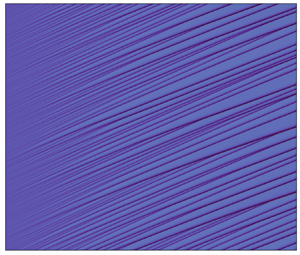Published online by Cambridge University Press: 25 August 2022

The stability and dynamics of a falling liquid film over an anisotropic porous medium are studied using a one-domain approach. Our stability analysis shows a significant departure from the effective no-slip boundary condition in the isotropic case. Anisotropy does not affect the threshold of linear instability. However, a non-trivial dual effect of anisotropy on the film stability is observed depending on the permeability of the porous medium. This dual effect results from the net balance of the enhancement of viscous diffusion at the top Brinkman sublayer and the mitigation of viscous damping in the core Darcy sublayer. Three-equation models have been derived from the lubrication theory approximation in terms of the exact mass balance and averaged momentum balances in the porous and liquid layers. In the nonlinear regime, anisotropy has a dual effect by damping capillary waves at large permeabilities and enhancing them at low permeabilities. Anisotropy also affects wave speeds and shapes, modifies travelling-wave branches of solutions, affects the development of a time-periodic wavetrain by inlet forcing and alters the noise-driven dynamics of the flow. These effects result from the mitigation of mass exchange at the liquid–porous interface and the contribution of the cross-stream permeability in the Brinkman top sublayer to the viscous diffusion.